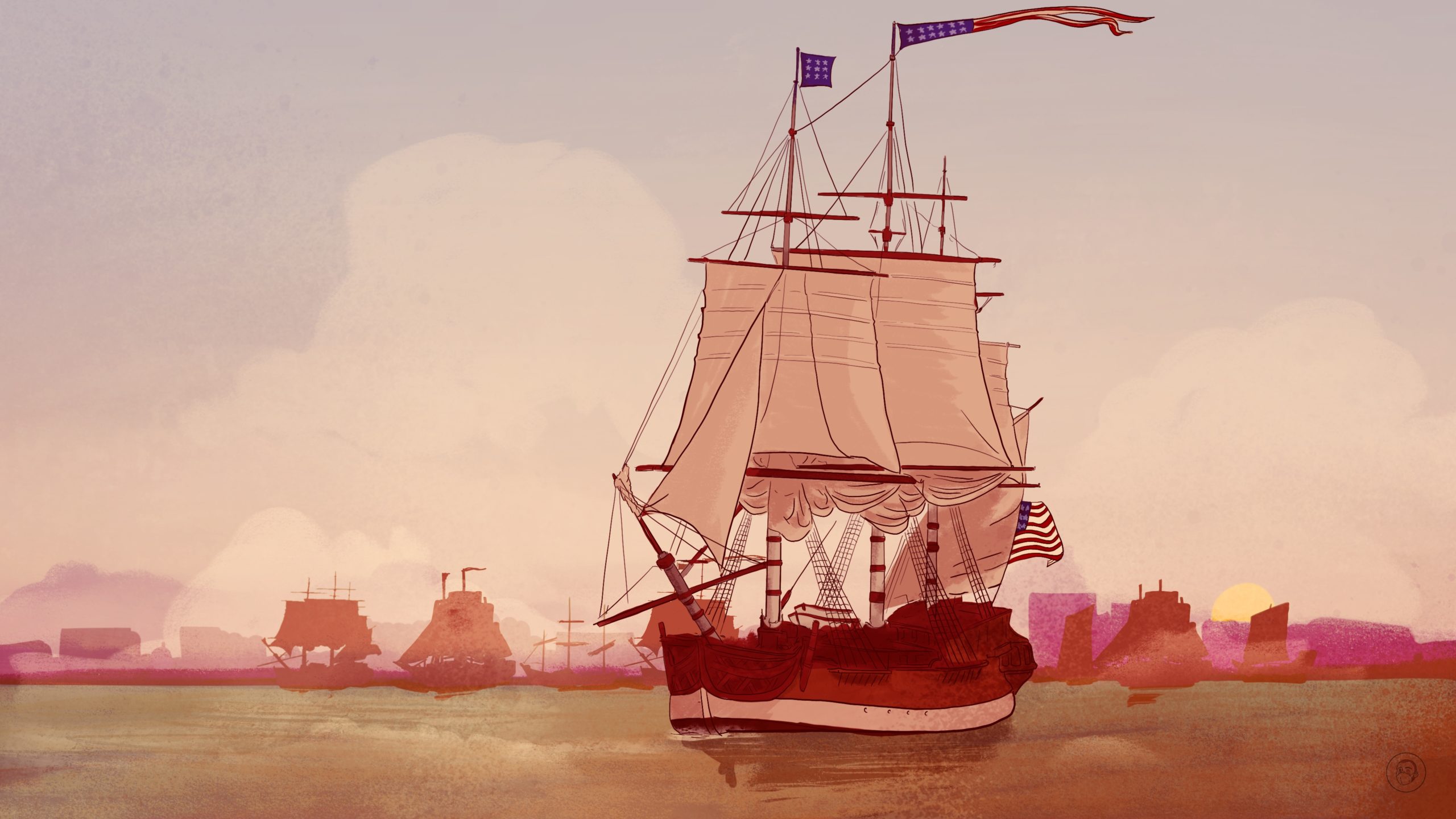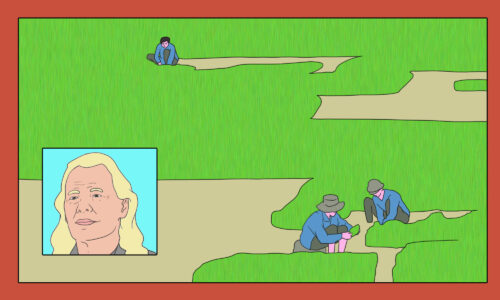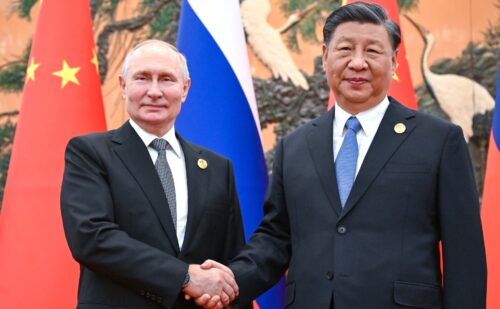The ‘Empress of China’ and the beginning of U.S.-China trade
On a wintry day in 1784, a schooner docked in New York set sail for Guangzhou. This journey halfway around the globe would take half a year; it marked the beginning of the largest trading relationship that the world has ever known.

This Week in China’s History: February 22, 1784
New York City is in the midst of one of its mildest winters ever, with its latest first snow ever, and even that just a dusting. Such was not the case in 1784, when an exceptionally cold February kept the Hudson River and much of the harbor frozen.
Among the ships kept in port by the cold was a 360-ton schooner named the Empress of China. While her captain, John Green, waited anxiously, “the mercury dipped below zero for days on end,” according to historian Eric Jay Dolin in his book When America First Met China. “Finally,” Dolin records, “the temperature rebounded, causing the ice to retreat, and on Sunday, February 22, as the sun rose in the brilliant blue sky and gentle winds tippled the surface of water…the Empress of China cleared the wharf, and Green and his forty-two-man crew began the groundbreaking voyage, thus launching America’s trade with China.”
As Dolin implies here, the vessel’s name was no coincidence: the Empress’s destination was Guangzhou, and the Empress was the first American vessel to undertake trade with China. George Washington’s 52nd birthday was also the birth of the largest trading relationship that the world has ever known.
Besides Green, her captain, the most important man aboard was Samuel Shaw, who, as “supercargo,” was responsible for the voyage’s commercial aspects. This was Shaw’s first trip to China but it would not be his last: he would be the first diplomat to represent the United States in China, first as consul to Canton (now Guangzhou) under the Articles of Confederation, and then, in 1792, as Ambassador to China, again stationed at Canton.
The Empress of China carried the commercial ambitions of the new nation. Not only was her journey officially chartered by the Continental Congress, but she had the financial backing of the most powerful men in the freshly united United States. As director of the Hong Kong Maritime Museum (a gem of a museum near the Stanley Market) Libby Chan Lai-pik put it in an interview, “the backer[s] of the Empress of China were all signatories of the [Declaration of Independence]….This was a private enterprise but a national priority.”
Green and Shaw had filled their hold with some 30 tons of ginseng, native to North America and highly valued in China, as one of the few American products of interest to the Chinese, as well as otter pelts and cloth. Embarking on their journey around the world, with a 13-gun salute fired in New York harbor, the Empress made its way east across the Atlantic to the Cape Verde islands, then rounding the Cape of Good Hope and crossing the Indian Ocean. In July, near Jakarta, the ship stopped to take on supplies and joined a French vessel, the Triton, also en route to Canton. The Triton’s captain offered to accompany the Empress of China the rest of the way, making their way through the South China Sea to the Pearl River estuary. On August 23, the stars and stripes flew in Chinese waters for the first time. A week later, Green, Shaw, and their crew dropped anchor at Canton.
Shaw’s journals survive, giving us insights to the experiences of the first Americans to work as such in China. Shaw details the Canton system at work: the divisions and jealousies among the various European states, the arrangements and accommodations particular to each of them, and the obligations and opportunities each pursued with and toward the Qing state.
“The day of our arrival at Canton, August 30th,” Shaw records, “we were visited by the Chinese merchants and the chiefs and gentlemen of the several European establishments, and treated by them in all respects as citizens of a free and independent nation. The Chinese themselves were very indulgent towards us, though, ours being the first American ship that had ever visited China, it was some time before they could fully comprehend the distinction between us and Englishmen.”
The distinction between Americans and Englishman turned out to be important, for the fall of 1784 was one of diplomatic intrigue. In November, a British gunner accidentally killed a Chinese vendor, in what came to be known as the Lady Hughes incident, and war was narrowly averted while America’s first vessel to China lay at anchor.
The Empress had been sent to China to develop trade, and upon arrival it appears the opportunity was well received. Shaw writes that Chinese officials “styled us the New People; and when by map we conveyed to them an idea of the extent of our country, with its present and increasing population, they were highly pleased at the prospect of so considerable a market for the productions of their empire.”
The Empress of China stayed in China for more than four months, finding buyers for the pelts, ginseng, and other wares she had brought from New York. The return voyage began nearly a year later. Empress of China left Canton on December 27, 1784, and arrived, to a hero’s welcome, in New York on May 11, 1785. In her hold were 800 chests of tea and 20,000 pairs of nankeen trousers. The 25% return on investment was less than projected, but enough to lay the foundation for U.S.-China trade, now worth more than $550 billion.
Shaw reported on the journey’s success — “The first vessel that has been fitted out by inhabitants of the United States of America, for essaying a commerce with those of the empire of China” — to the Minister for Foreign Affairs, John Jay, enclosing with the letter “two pieces of silk presented to me by the Fuen of Canton, as a mark of his good disposition towards the American nation.” Shaw continued, “I consider myself as peculiarly honored in being charged with this testimony of the friendship of the Chinese for a people who may, in a few years, prosecute a commerce with the subject of that empire, under advantages equal, if not superior, to those enjoyed by any other nation whatever.”
Jay responded, some months later, reporting that “Congress feel a peculiar satisfaction in the successful issue of this first effort of the citizens of America to establish a direct trade with China, which does so much honor to its undertakers and conductors.”
This Week in China’s History is a weekly column.





